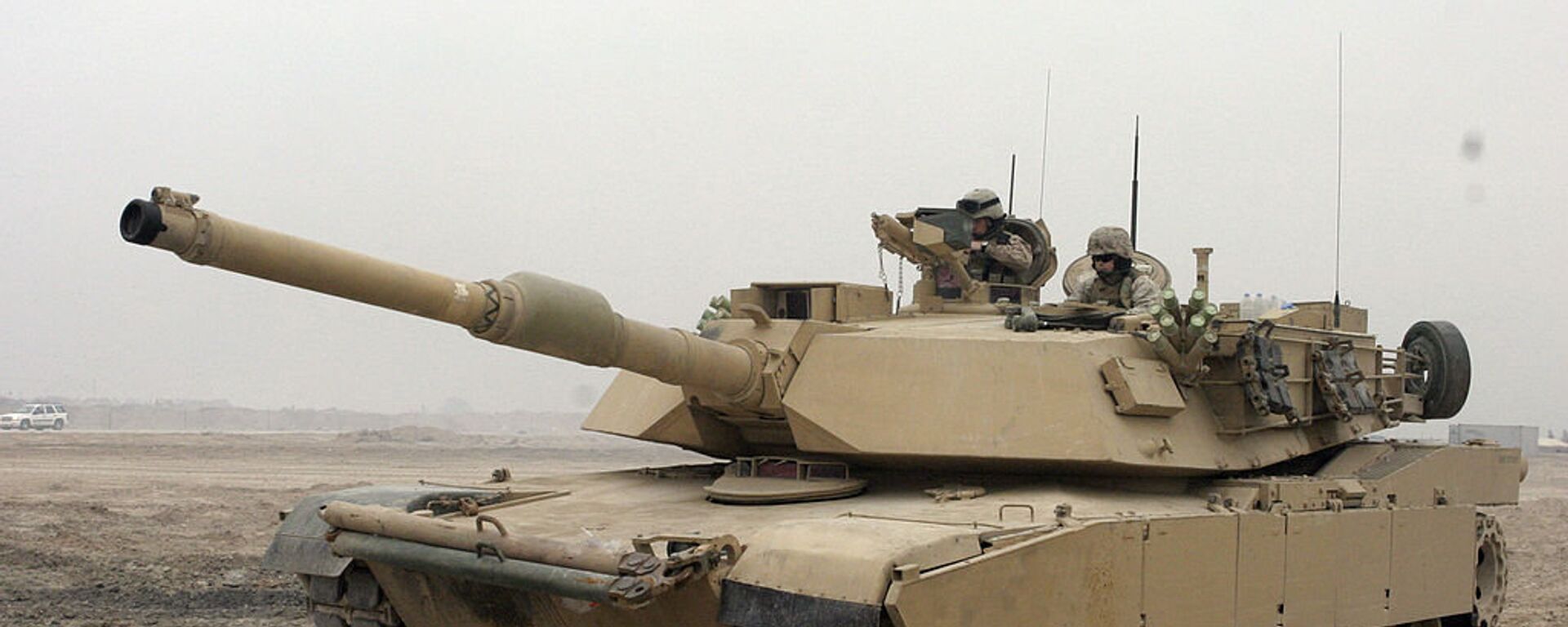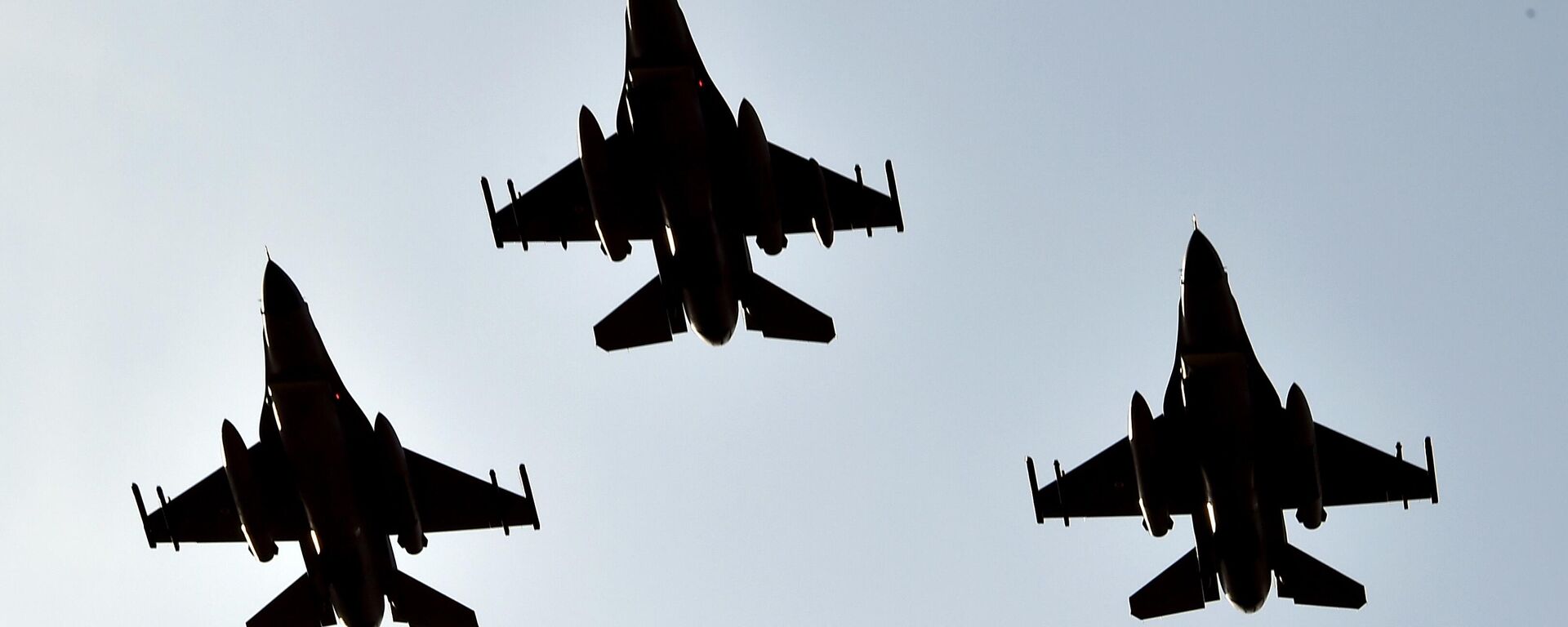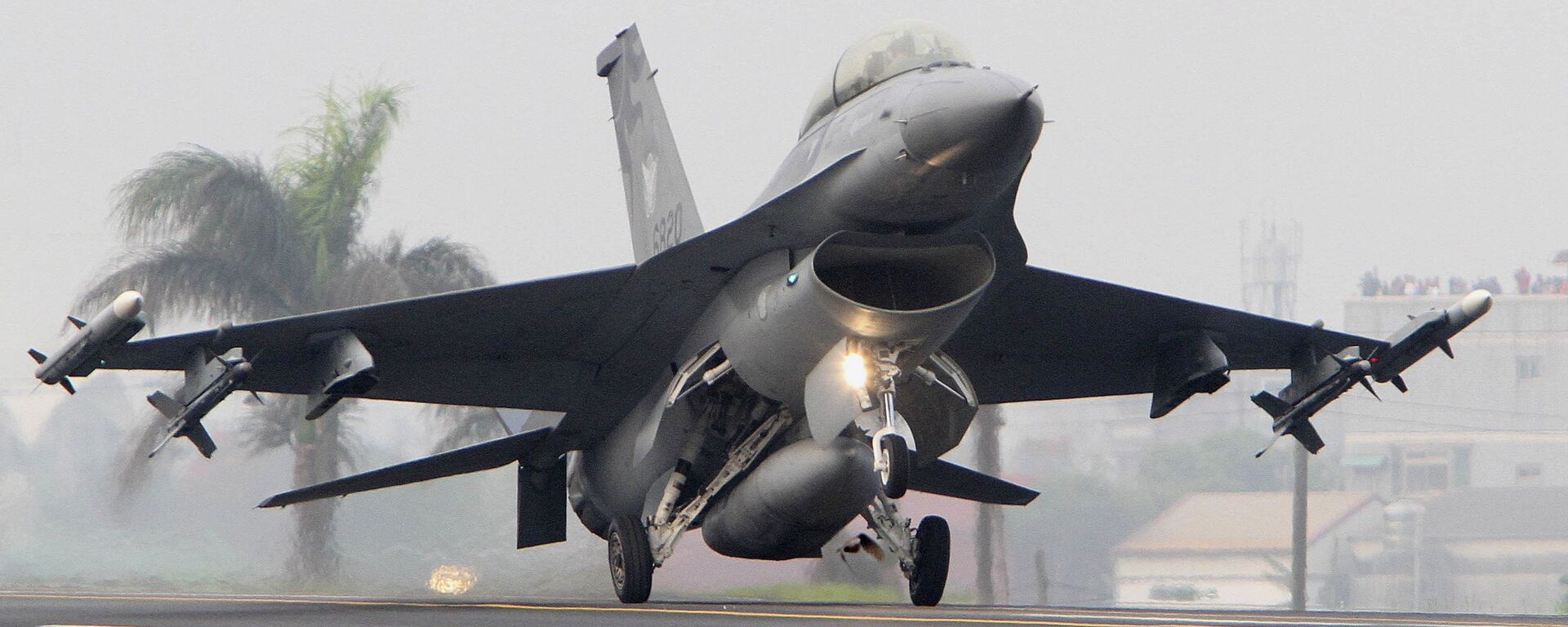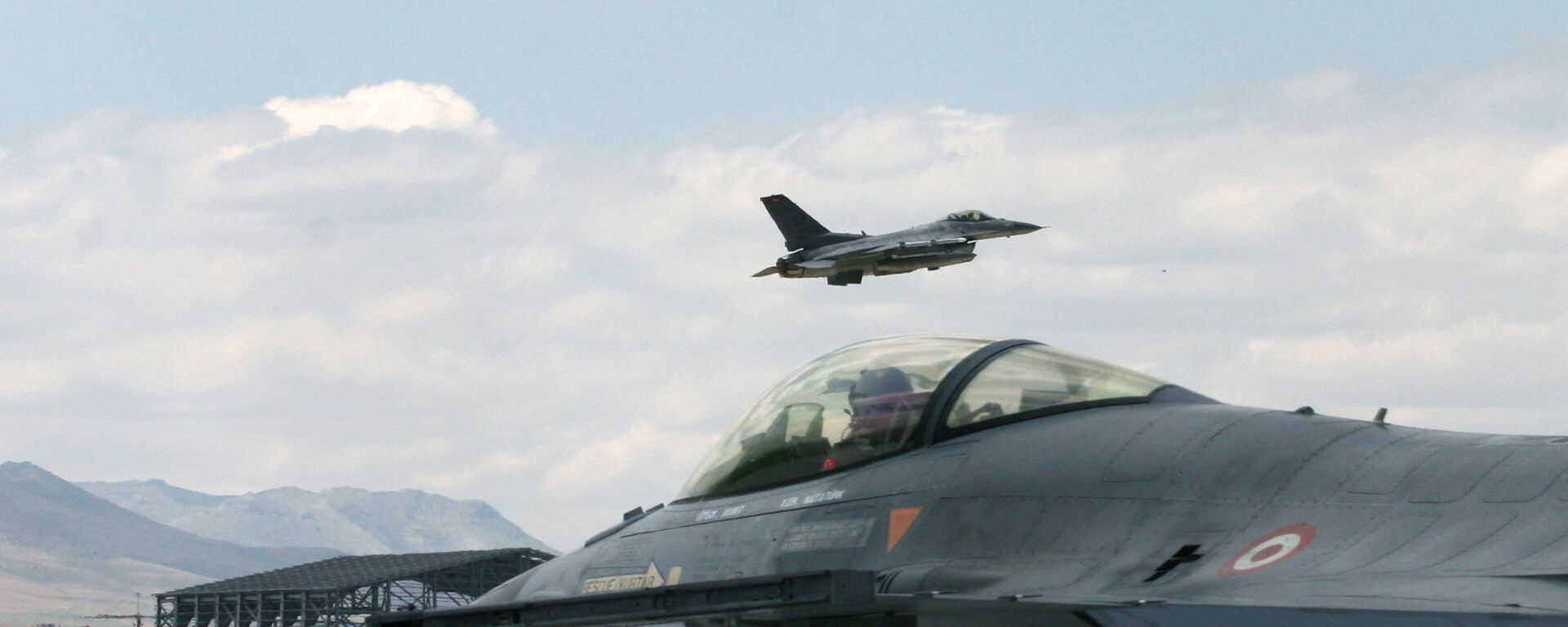What is the F-16 Falcon Fighter Jet NATO is Debating Shipping to Kiev?
19:55 GMT 25.01.2023 (Updated: 11:57 GMT 26.01.2023)
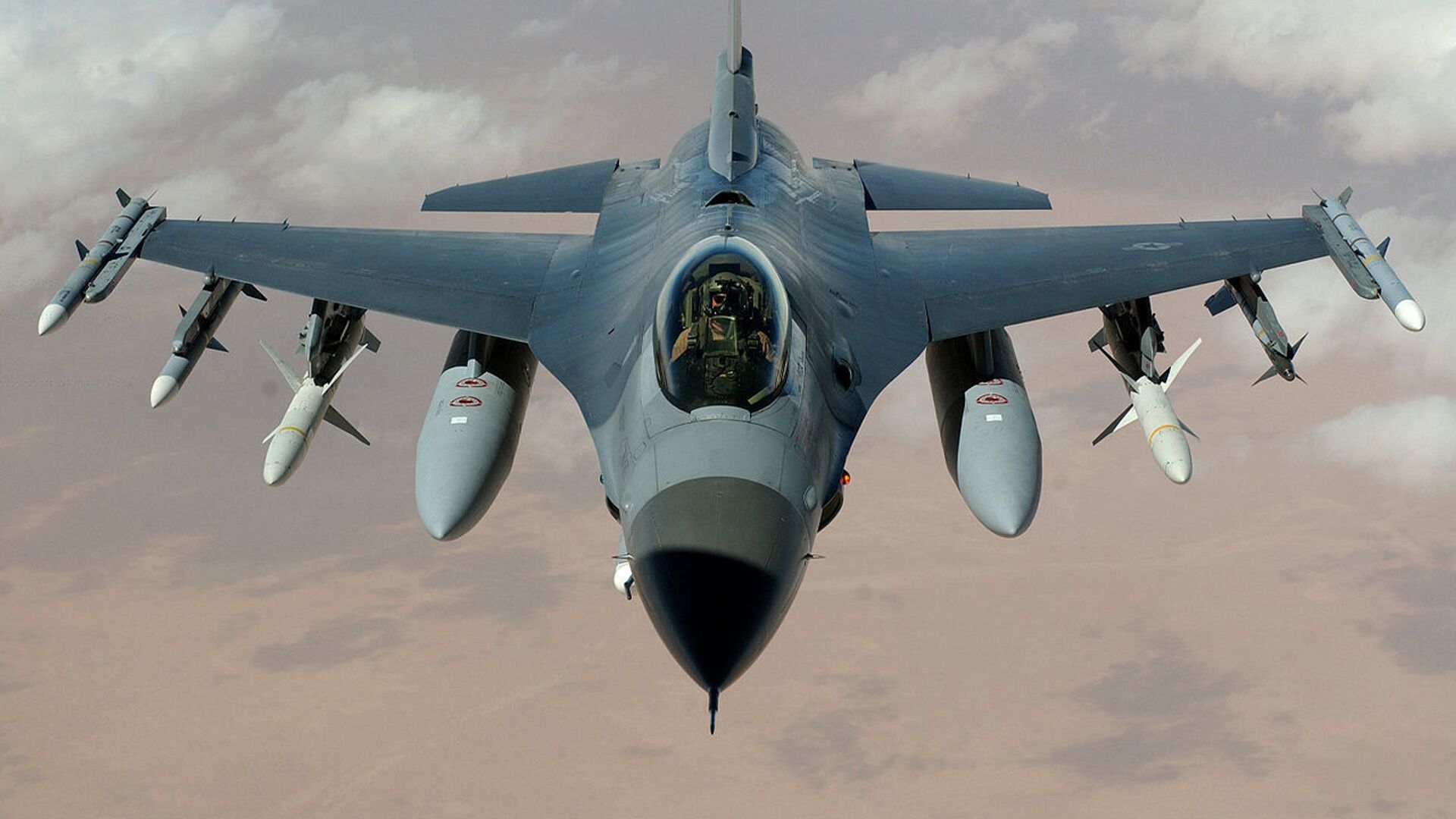
CC0 / /
Subscribe
Longread
Ukrainian Foreign Minister Dmitry Kuleba said on Wednesday that the European Union was preparing to supply Kiev with F-16 Falcon fighter jets made in the United States. The jets are just the latest advanced weapon NATO has given to Ukraine to use against Russian forces, including main battle tanks and other armored vehicles.
Kuleba claimed on his Facebook* page what he said was an exchange with an unnamed “European colleague,” who told him they were “working on it” when he asked about when Ukraine was getting F-16s.
Last week, Dutch Foreign Minister Wopke Hoekstra told the country’s parliament that the government would take a request for F-16s from Ukraine with “an open mind.” However, Prime Minister Mark Rutte has said the issue is out of the question for the moment.
NATO allies supporting Ukraine as a proxy force have previously debated giving Russian-made MiG-29 fighter jets to Kiev, which also operates the aircraft, but the issue has been repeatedly scuttled over the last year. Most recently, Slovakia, a former Soviet ally when both nations were socialist, claimed last month it was “ready to” give its remaining dozen or so MiG-29s to Ukraine, having struck a deal for other NATO allies to patrol Slovak skies.
A Tool of US Blackmail
Bratislava is set to soon receive F-16V “Viper” jets from maker Lockheed Martin, a recent version of the jet that has been upgraded with a powerful new radar and ability to operate with fifth-generation jets like the F-22 and F-35. Washington has used export of the F-16, especially the V variant, as a way to blackmail its allies into doing its bidding.
Turkey, another NATO ally, has struggled to obtain F-16s from the US, with US Sen. Robert Menendez (D-NJ) on Tuesday saying he would pressure the Biden administration to withhold a prospective $20 billion deal until Ankara backs off its decades-long quarrel with neighbor and fellow NATO ally Greece.
“I would aspire for Turkey to be different than it is under President [Recep Tayyip] Erdogan,” Menendez told Greek media, citing Ankara’s belligerent dispute with Athens and the recent jailing of Istanbul Mayor Ekrem İmamoğlu and his disqualification from challenging Erdogan in elections.
“It is in that context that I have opposed the sale of the F-16s because the reality is that we have not seen a Turkey under Erdogan that lives up to those expectations,” Menendez added.
Reports also emerged in US media earlier this month that the F-16 deal was an attempt to push Turkey into approving Sweden and Finland’s applications to join NATO, which Ankara has been skeptical of due to Stockholm and Helsinki’s relationships with Kurdish militant groups fighting against Ankara. However, Erdogan’s government has swatted down those reports.
The US has already denied Turkey the purchase of F-35 stealth aircraft in protest over its decision to buy S-400 air defense systems from Russia. Washington also objected to India’s purchase of S-400s, an action that draws US sanctions under its anti-Russian CAATSA law, but told New Delhi in 2018 it would waive those sanctions if it also bought F-16s from the US.
In that context, Kiev’s potential reception of F-16s could be a warning sign that Washington may require it to march more closely in line with its interests.
So what’s the story behind the F-16?
‘Lightweight Fighter Mafia’
The program that yielded the F-16 began in 1972 as the US Air Force went looking for a new interceptor. A group of vocal engineers and defense analysts nicknamed the “Lightweight Fighter Mafia” pushed the Pentagon toward the concept and away from the dart-style interceptors of the early Cold War that were intended to chase down Soviet nuclear bombers at ultra-high speed and shoot down enemy fighters from far away using missiles. Such fighters had struggled in close-in dogfights with nimbler Soviet-built fighters during the US war in Vietnam.
The F-16 Falcon was designed by General Dynamics, now a part of Lockheed Martin, and produced the first jet by 1975. The aircraft traded out weight and carrying capacity for extra speed and maneuverability, and incorporated new technologies like fly-by-wire controls to replace the larger, maintenance-intensive hydraulic controls. With a high-mounted bubble cockpit, the pilot is afforded excellent visibility, and a new ejection seat design improved survivability in case the pilot was forced to abandon ship.
The new F-16 was just 49 feet long, making it one of the smallest supersonic-capable aircraft in operation, aside from Northrop’s F-5 Tiger and Chengdu’s JF-17 Thunder. It has a single General Electric-made turbojet engine that can propel it to speeds in excess of Mach 2. It entered active service with the USAF in 1979.
The F-16’s competitor aircraft during the design process, the YF-17 built by Northrop, went on to become the US Navy’s F/A-18 Hornet fighter, and incorporated many of the same designs as the F-16.
In the 1980s, it became apparent the F-16 was also useful as a strike or multirole aircraft, and it began to be fitted with bombs and air-to-surface missiles.
What Armaments Does an F-16 Carry?
Different variants of the F-16 have different capabilities. The variants operated by the Royal Netherlands Air Force are F-16 A/B variants, some of the oldest in service anywhere. However, some have been upgraded with Block 50 technology dating to the early 1990s. Newer variants, like the F-16V “Viper,” have an active electronically scanned array (AESA) radar.
All are generally armed with a General Electric M61A1 20mm six-barrel Gatling gun in the wing root. They can carry a slew of air-to-air missiles and other strike weapons, such as the AGM-88 HARM anti-radar missiles, JDAM laser-guided bombs, JSOW cruise missiles, WCMD cluster bombs, Harpoon and Penguin anti-ship missiles, and a variety of electronic warfare devices.
Many nations have had specialized versions of the F-16 built for them, including Turkey, Israel, and India, and in each case the modifications include the ability to deploy indigenously designed weapons.
Who Flies the F-16?
The jet was made for the US Air Force, but was also intended as a high-quality, low-cost export fighter as well. The initial order for the USAF came at the same time as orders for the Netherlands, Belgium, Denmark and Norway.
The US has also sold them to Greece, Poland, Portugal, Romania, Turkey, Bahrain, Egypt, Iraq, Israel, Jordan, Oman, the United Arab Emirates, Morocco, Indonesia, Pakistan, India, Singapore, South Korea, Taiwan, Thailand, Chile, Venezuela and Italy.
Specialized versions of the F-16 include the F-16 Özgür for Turkey, the F-16I “Sufa” for Israel, and the F-21 for India. The USAF’s aerial performance team, the Thunderbirds, also fly F-16s.
The F-16 has also served as the basis for several aircraft built by other operators, including Taiwan’s Indigenous Defense Fighter, Japan’s F-2, and South Korea’s FA-50 Golden Eagle aircraft.
More than 4,400 F-16s have been built.
How Has the F-16 Performed in Combat?
The Pentagon boasts the F-16 has never lost a dogfight, although five have been lost to ground fire. Two F-16s reportedly collided in mid-air in 2006 over the Aegean Sea in what observers claim was a mock dogfight between Turkish and Greek F-16s on separate patrols, but both governments officially deny that story. Another Turkish F-16 was also reportedly shot down by a Greek Mirage 2000 pilot in 1996, which Athens has also denied.
The F-16 first saw combat action in Operation Desert Storm, the US attack on Iraq in 1990-91 after Iraq invaded and annexed Kuwait. The F-16 worked primarily as a strike aircraft, especially in the “Wild Weasel” role of taking out air defense radars. Later, the F-16 was used as an enforcer of the US’ unilaterally imposed “No Fly Zone” over Iraq, and scored its first aerial kill when it downed an Iraqi MiG-25 in 1992.
Nearly all of the remaining aerial kills by the F-16 have been made by Israeli and Pakistani pilots.
The F-16 was later used during the US and NATO interventions in Yugoslavia in the 1990s, shooting down Yugoslav aircraft and striking ground targets. It was used again as a strike aircraft in the US invasion of Afghanistan beginning in 2001, and the US invasion of Iraq in 2003, as well as the NATO bombing campaigns in Libya and Syria. Emirati, Bahraini, and Moroccan F-16s have been used in bombing campaigns in Yemen since the civil war started in 2015.
Two Venezuelan F-16s were also used to suppress the attempted overthrow of President Carlos Andres Perez in 1992 by military officers led by Hugo Chavez. They strafed ground targets and shot down three rebel-flown aircraft, an At-27 Tucano and two OV-10 Broncos.
How Much Does an F-16 Cost?
The newest and most advanced models, like the V variant, can cost $80 million - roughly the same as an F-35 stealth fighter. However, older variants can sell for as little as $30 million, making them a bargain if top-of-the-line performance isn’t needed.
*Facebook and its parent company Meta are recognized as extremist and banned in the Russian Federation
